This article seeks to disprove several misconceptions about scientists which the general public still harbours. Thing is: some professors haven’t got the foggiest clue about science, not just in general, but even in their own specific research area. They are unable to perform even the simplest lab experiments without fudging them up completely, and the stories they tell stray into being too silly. Science, dear reader, is an artisan craft which is not so much about scientific skills and quest for knowledge, but about publishing cack-handed science fiction which stretches credulity but easily passes peer review.
Meet the Alzheimer’s researcher Professor Antoni Camins and his colleagues at the Institute of Neurosciences at the University of Barcelona in Spain.
Nobody knows why Cheshire aka Actinopolyspora Biskrensis decided to look at Camins’ research output, maybe the cat was simply patrolling PubPeer for uncorrected papers. But then Cheshire stumbled over this 4 year old study about Alzheimer’s, unnoticed by earlier commenters:
Oriol Busquets, Miren Ettcheto, Mercè Pallàs, Carlos Beas-Zarate, Ester Verdaguer, Carme Auladell, Jaume Folch, Antoni Camins Long-term exposition to a high fat diet favors the appearance of β-amyloid depositions in the brain of C57BL/6J mice. A potential model of sporadic Alzheimer’s disease Mechanisms of Ageing and Development (2017) doi: 10.1016/j.mad.2016.11.002
The study postulates the existence of a “Type III diabetes” which is caused by high-fat diet and obesity, which in turn causes Alzheimer’s. Cheshire commented:
“Welp. Several images in this paper have many repeated internal features, a sample shows below. I would be interested to hear an explanation from the authors. TAM.”
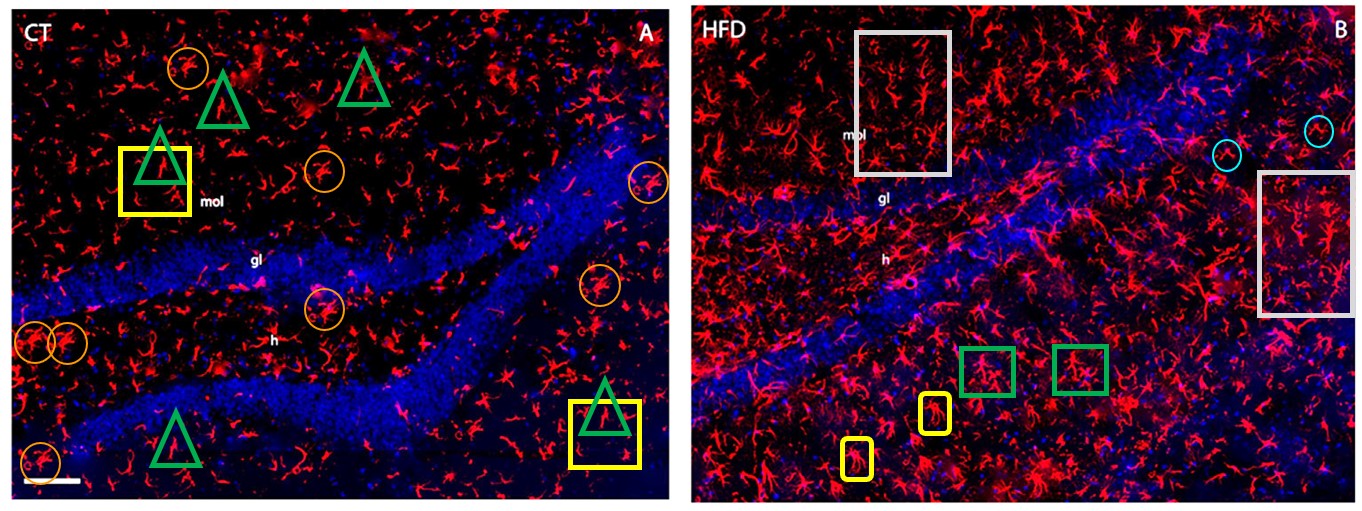
“TAM” means “there are more”, and there were, as you will see in a moment. For example, here another take at that same Figure 2 by Aneurus Inconstans:
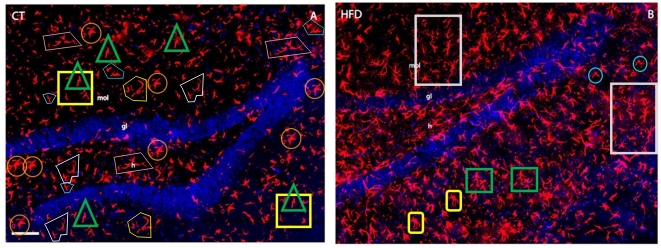
I wrote to Camins, with his institute’s leadership in cc, asking about his plans on this and other papers of his which were flagged on PubPeer. Camins replied immediately, putting in cc several co-authors of the Busquets et al 2017 paper:
“The image has not been modified or any type of manipulation has been carried out. They are images taken under the microscope after labeling with the corresponding fluorescently labeled primary and secondary antibodies. Therefore, I repeat that it is IMPOSSIBLE to paint, draw etc on these images. If you have doubts about our experimental studies, you can come to our laboratory and see how we work.
In addition, we can solve all the doubts you have and you can review all our results.
We have nothing to hide and our results are legal.“
I do not doubt the results are “legal”, this is Spain after all, where Carlos Lopez-Otin is a national saint, despite his many data forgeries and a mass murder of 5000 mice who knew too much. Also, this is Barcelona where Paolo Macchiarini still resides in a villa not far from the local hospitals where he used to abuse and kill female patients with trachea transplants, and still not even the Spanish police gives a flying toss.
So why indeed should a ridiculously Photoshopped picture of a stained mouse brain not be perfectly legal in Barcelona.
But I asked Camins to share the original file from the confocal microscope. The professor replied, and hid behind the classic “it-passed-peer-review” excuse:
“We will try to find the original images after 5 years.
Now, from my point of view, Who is the person who questions the work of the research team? I cannot be reviewing all my works, looking for photos, images etc when they have already been reviewed by experts in the journals. All expert scientists who work in this area (BRAIN) know that it is impossible to falsify these images. The morphology of the glia is what it is, it cannot be painted on an image of the brain. As an investigative journalist, I would be very grateful if first of all, before accusing of falsify images, you come to our laboratory and check all the information yourself. I repeat that we do NOT have anything to hide nor do we have to falsify results. This doesn’t have to be a witch hunt.“
I declined the invitation and asked again for the raw data file. A coauthor, Carme Auladell, associate professor at same Institute of Neurosciences, explained to me how neuroscience works:
“Why do you miss seeing that all astrocytes (in red) have the same morphology?
A: is a brain section obtained from untreated mice and B is a brain section obtained from mice treated with kainic acid. The images display the distribution and morphology of astrocytes immunolabelled against their main protein, Glial Fibrillar Acidic Protein. The astrocytes have the same features and little differences could be due to the brain section (how the cell has been cut). In B, the astrocytes are bigger than in A because they are reactive. The interest of these pictures is seeing the cell morphology in A (untreated mice) compared with the morphology in treated mice (B). We use the reactivity of these cells as an indicator of induced brain damage.
We can’t understand how dare you question the validity of the figure“
Indeed, how dare I (incidentally, my own past research was about Glial Fibrillar Acidic Protein in the mouse brain). I guess only failed scientists never see same cells and even blocks of cells Photoshop-cloned several times over a picture of brain section, while Camins and Auladell aim to cure Alzheimer’s with this magic method.
As promised, their paper has same Photoshop issues with other figures, like a set of cloned cells in Figure 6, or how about Figure 3:
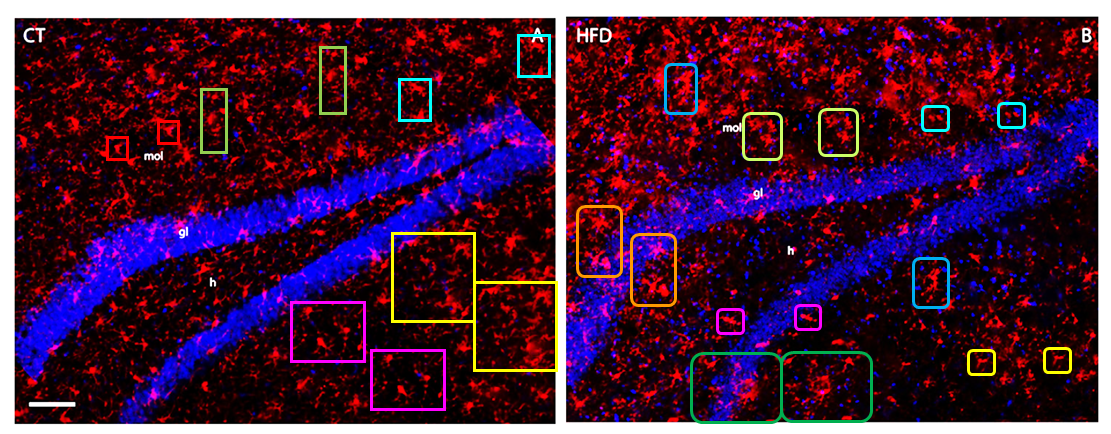
Hoya Camphorifolia found more in this Figure 3, having dimmed the blue channel for better detection, while suggesting to Camins to urgently investigate the mysterious clonality of brain section patterns:
“What is the phenomenon that induced so many astrocytes into identical postures? Surely it deserves closer study.”
Camins wrote to me:
“Some of your colleagues ( #3 Hoya Camphorifolia) say that they do not doubt the images. I’m really lost …………….. with this topic. Now they are interested in doing more experiments ??????“
Intellectual elite, you see.
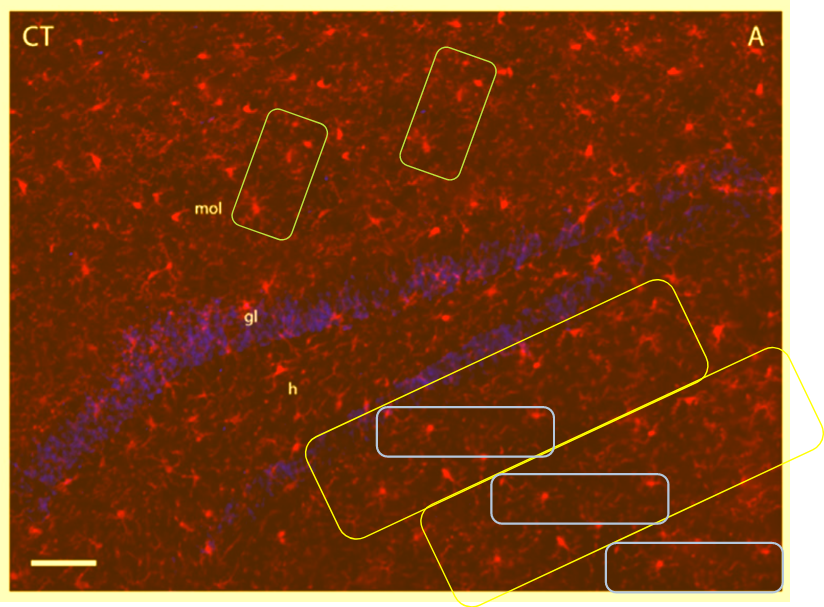
Camins also sent me what he described “the original figure that we made for the journal. The photos are taken and have not been modified“. It was the same Figure 2 as a jpg file but in higher resolution. Not the unmodified raw data from confocal microscope, not even the final Photoshop product, but an exported image of the exported images thereof. Cheshire then used it to find even more shenanigans: a flock of identical astrocytes which fell prey to Photoshop’s clone tool.
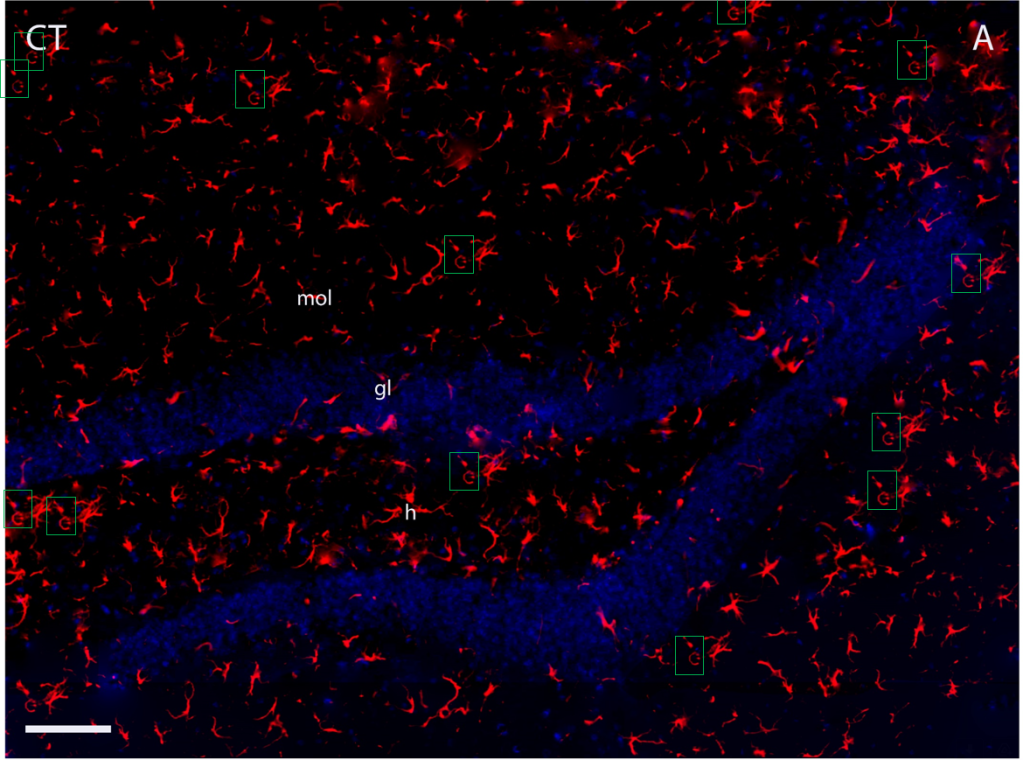
So I informed the Editor-in-Chief of the journal Mechanisms of Ageing and Development and professor at the National Hellenic Research Foundation in Athens, Greece, Efstathios Gonos. Who then announced, in bold:
“I would expect Prof Camins and the authors to respond back to the journal within 4 weeks. It will be also essential at this stage the authors to submit all raw data in relation the mentioned article. In case the journal finds authors’ response unsatisfactory or receives no response, the Publisher may decide the retraction of the article.“
Jordi Alberch, director of the Institute of Neuroscience, replied to Gonos with others, including myself, in cc:
“We are also taking this issue seriously as usual, and probably in a couple of weeks you will receive an institutional report of this investigation after examining all the data.”
Camins pleaded with Gonos (misspellings his):
“This morning I explained to Mr. Scheider that the images are not falsified or modified. We do not alter the results of our research. It is a simple GFAP labeling of astrocytes that is easy to do and does not have any problems. For this reason I do not understand the problem of mister Scheider. Even the gScheiner colleagues at Pubpeer say the image is correct. I don’t understand why our manuscript has to be retracted when we have done nothing wrong. I do not understand when it is said that there are MORE FALSIFIED PICTURES, it is completely false.“
That was before the other figures in that paper were flagged. But then again, Camins is not entirely clueless about the problem of image duplication in his lab and the need to present raw data as he pretends. A year ago, he issued a correction for the following paper, because somehow a western blot was used 4 times:
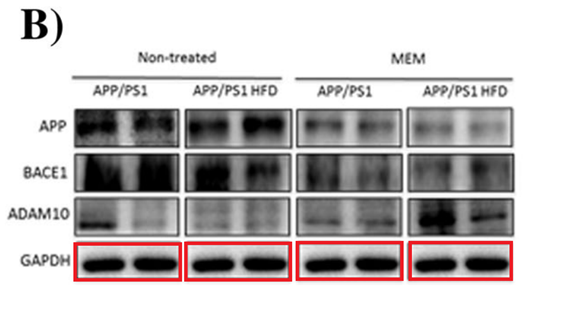
Miren Ettcheto, Elena Sánchez-López, Yaiza Gómez-Mínguez, Henrry Cabrera, Oriol Busquets, Carlos Beas-Zarate, Maria Luisa García, Eva Carro, Gemma Casadesus, Carme Auladell, Manuel Vázquez Carrera, Jaume Folch, Antoni Camins Peripheral and Central Effects of Memantine in a Mixed Preclinical Mice Model of Obesity and Familial Alzheimer’s Disease Molecular Neurobiology (2018) doi: 10.1007/s12035-018-0868-4
Prior to the correction, Camins admitted on PubPeer to a “graphic error” which in his view “does not change the results and conclusions of the manuscript“. I actually agree, the bands are all from different gels anyway, it doesn’t matter if Camins has a loading control or not, it is worse than comparing apples with oranges. These people are unable to run a simple western blot experiment correctly, their figure is not just scientifically useless, its value is total negative and damaging for science. But this joke of a western blot passed “thorough and constructive peer review” in a journal with an impact factor 4.5, and claims to deliver a medical therapy not just for Alzheimer’s but also for diabetes, two huge markets. Rest assured all this translates into some serious cash and career advancement rewards for the authors.
Incidentally, one of these is Eva Carro, research group leader in Madrid, with currently one retraction for image duplication and a dozen of papers on PubPeer. Including this other one with Camins:
Fernando Bartolome, Desiree Antequera, Eva Tavares, Consuelo Pascual, Rosario Maldonado, Antoni Camins, Eva Carro Obesity and neuroinflammatory phenotype in mice lacking endothelial megalin Journal of Neuroinflammation (2017) doi: 10.1186/s12974-017-0800-2

This plump image data fudging is how Camins and Carro aim to treat obesity and neurodegeneration, which they say are somehow causatively connected. One of this paper’s authors anonymously commented last year on PubPeer and announced: “The Journal has been conveniently informed in order to sort out this mistake“. Nothing happened since, and that journal has an impact factor of 6. Also this one-year-old evidence remained neglected, it studied the potential therapeutic targets of Alzheimer’s:
Maria Luisa De Lemos, Aurelio Vazquez De La Torre, Dimitry Petrov, Susana Brox, Jaume Folch, Mercè Pallàs, Alberto Lazarowski, Carlos Beas-Zarate, Carme Auladell, Antoni Camins Evaluation of hypoxia inducible factor expression in inflammatory and neurodegenerative brain models The International Journal of Biochemistry & Cell Biology (2013) doi: 10.1016/j.biocel.2013.04.011
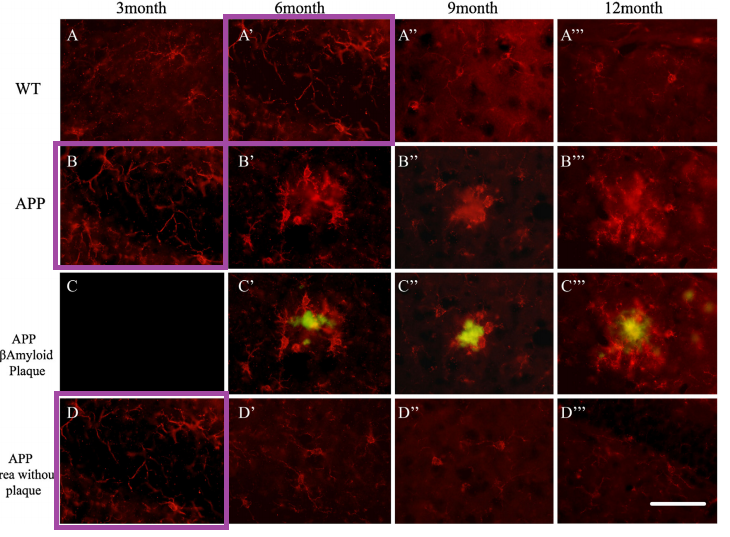
There are even more problems with Camins papers, like this (note again the recurrent co-author names):
Oriol Busquets, Àuria Eritja, Blanca M. López, Miren Ettcheto, Patricia R. Manzine, Rubén D. Castro‐Torres, Ester Verdaguer, Jordi Olloquequi, Manuel Vázquez‐Carrera, Carme Auladell, Jaume Folch, Antoni Camins Role of brain c‐Jun N‐terminal kinase 2 in the control of the insulin receptor and its relationship with cognitive performance in a high‐fat diet pre‐clinical model Journal of Neurochemistry (2019) doi: 10.1111/jnc.14682
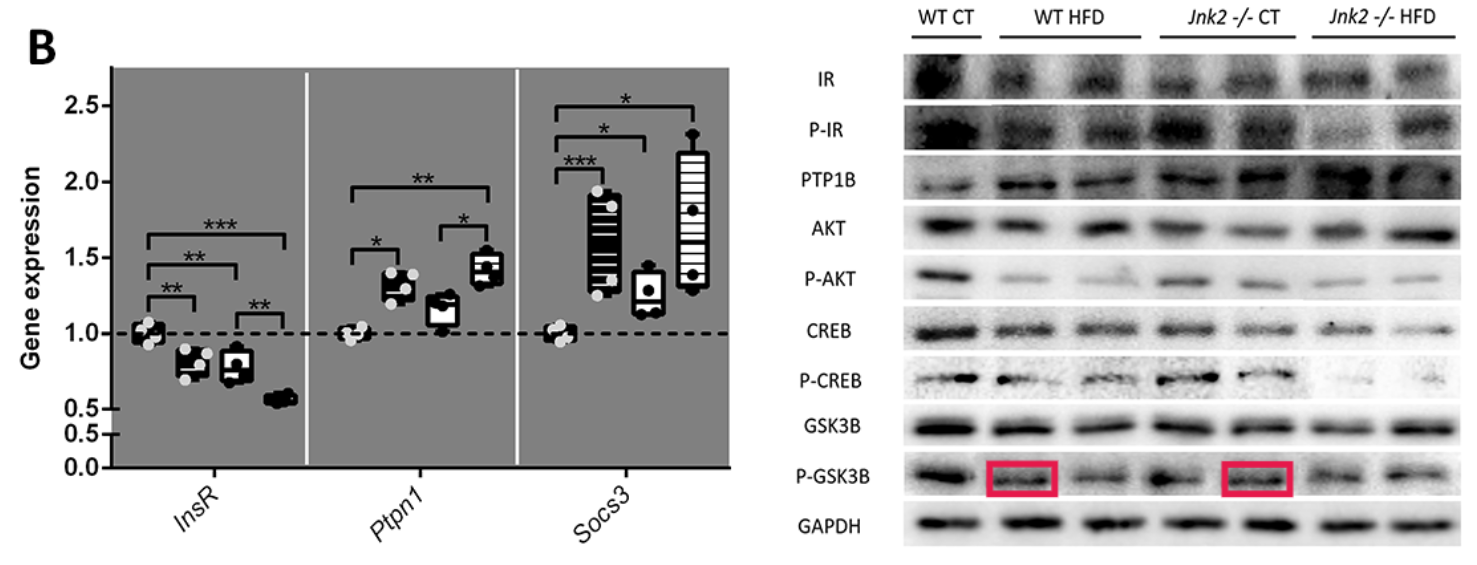
A cloned gel band. Maybe Camins and Auladell can explain to me how western blots work and that it is IMPOSSIBLE for a gel band to get duplicated?
You may have noticed another recurrent name: Merce Pallas Llibreria, Board of Directors member at the Institute for Neurosciences, representing the Department of Pharmacology, Toxicology and Therapeutic Chemistry which Camins is affiliated with. Here another their joint paper, again on high-fat diet and Alzheimer’s, and its Figure 4. Note the cloned patch:
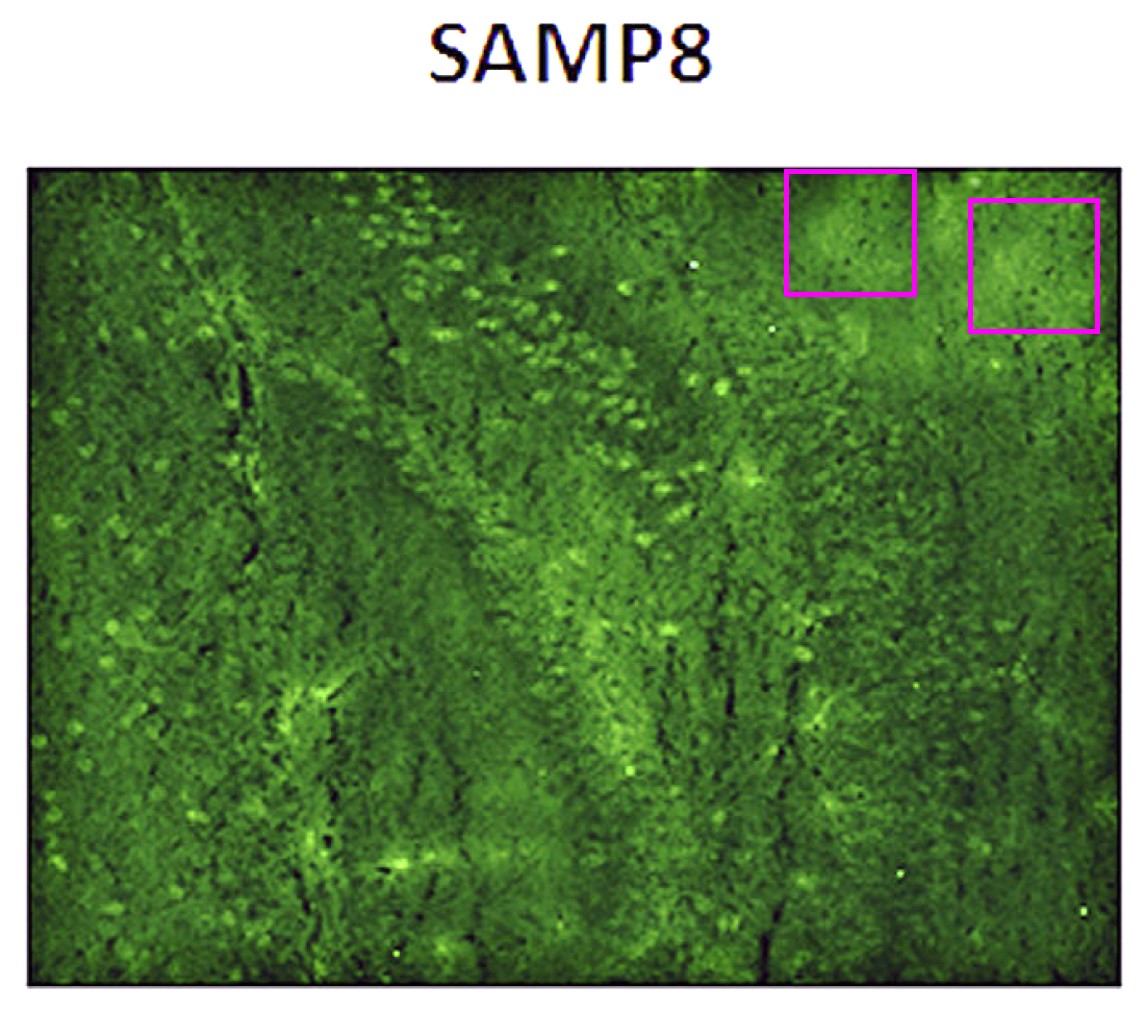
Sergi Bayod, Paolo Felice, Pol Andrés, Paolo Rosa, Antoni Camins, Mercè Pallàs, Anna-Maria Canudas Downregulation of canonical Wnt signaling in hippocampus of SAMP8 mice Neurobiology of Aging (2015) doi: 10.1016/j.neurobiolaging.2014.09.017
The last author Anna-Maria Canudas is associate professor at Pallas’ lab. More from the Barcelona team:
Miren Ettcheto, Dmitry Petrov, Ignacio Pedrós, Norma Alva, Teresa Carbonell, Carlos Beas-Zarate, Merce Pallas, Carme Auladell, Jaume Folch, Antoni Camins Evaluation of Neuropathological Effects of a High-Fat Diet in a Presymptomatic Alzheimer’s Disease Stage in APP/PS1 Mice Journal of Alzheimer’s disease : JAD (2016) doi: 10.3233/jad-160150
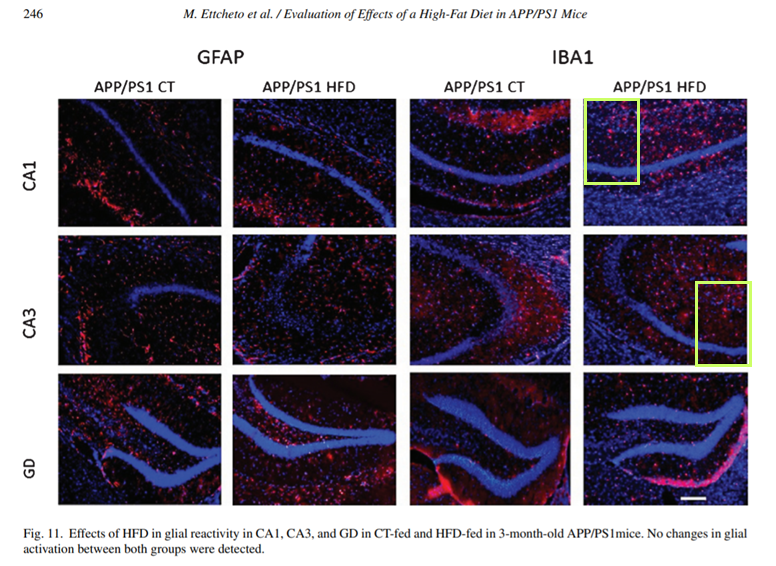
In this regard, Camins, despite being caught on image reuse before, replied on PubPeer with invitation to visit his lab to prove that “The image has not been modified or any type of manipulation has been carried out. They are images taken under the microscope after labeling with the corresponding fluorescently labeled primary and secondary antibodies.“
Pallas has currently 10 papers on PubPeer. Including this one, again with Camins. The paper postulated that resveratrol, found in trace amounts in red wine and thus popular with scientists, is good for your brain:
V. Palomera-Ávalos, C. Griñán-Ferré, V. Izquierdo, A. Camins, C. Sanfeliu, A.M. Canudas, M. Pallàs Resveratrol modulates response against acute inflammatory stimuli in aged mouse brain Experimental Gerontology (2018) doi: 10.1016/j.exger.2017.11.014
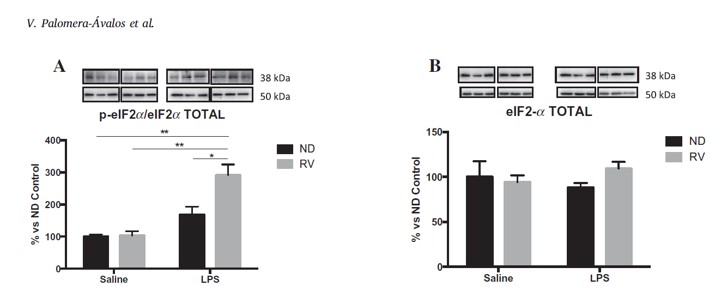

Pallas replied on PubPeer to explain the duplication:
“Dear Sir, The WB highlighted are the same. Both correspond to total EI2fα protein levels at the different experimental conditions tested (CT, LPS, LPS+Resveratrol). In panel A, There are representative images of phospho EI2fα and total EI2fα, and the bar graph is the semiquantitative values of ratio between phosphorylated protein and total levels of the same protein in order to express activation of EI2fα as a transcription factor, as is explained in the results and discussion In panel B, there are the same representative image for total EI2fα but compared with tubulin as a control charge to demonstrate that LPS treatment and LPS+resveratrol do no change the total levels of EI2fα protein, then corroborating that the results in panel A are due to an effective increase in phosphorylation rather than a changes in the levels of EI2fα protein. The only mistake in this figure was the wrong molecular weight stated in total EI2fα band in panel A, but correct in panel B (38Kda). Molecular weight 50 Kda is for tubulin. This error in not scientifically relevant for the interpretation of results and conclusion of the work discussion.“
Basically, Pallas says that the only mistake is the molecular weight label in Panel A, which should have said 38 kDa and not 50 kDa. Let’s accept this explanation for argument’s sake. Judging the band shapes in A, both phospho EI2fα and total EI2fα bands stem from different gels. Same problem with the panel B: the total EI2fα and tubulin bands also cannot be derived from the same gel. So we have at least 3 different gels, and the key message of the figure about changes in phospho EI2fα lacks a proper loading control.
Wait, just 3 gels? Why are the band triplets separate then? Like with their other paper discussed before, and apparently all other papers from that Barcelona team, the learned scholars avoid showing their samples on a continuous gel to deny a proper comparison between treatments. How can the results have any meaning at all with such a presentation? No wonder Pallas went silent when asked to provide uncropped gels.
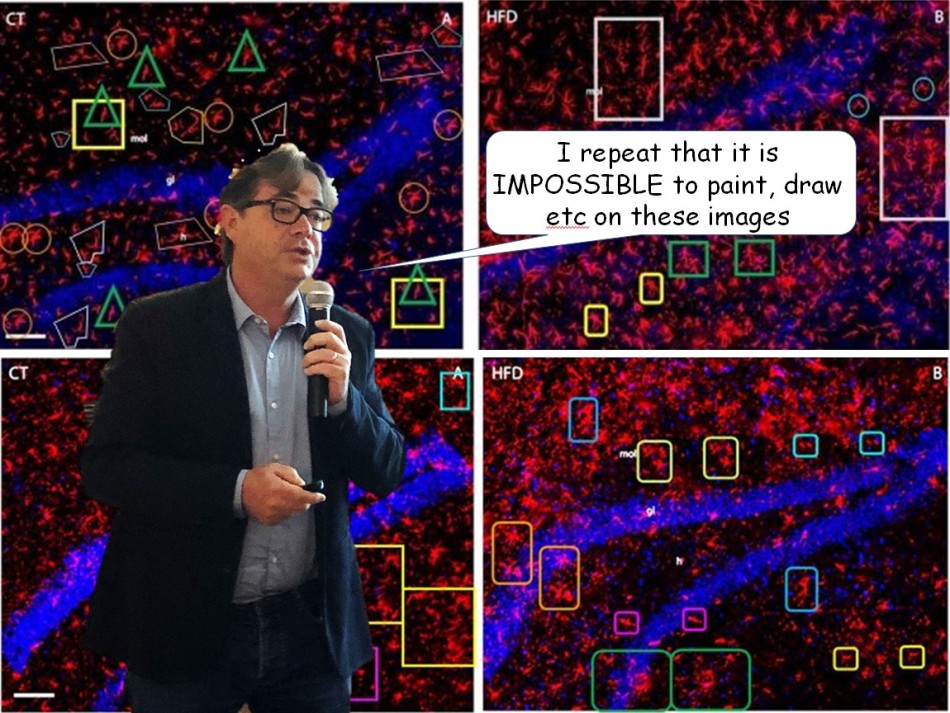
Again, I must agree with Professor Pallas that the mislabelling of protein weight is “not scientifically relevant for the interpretation of results and conclusion“. Because that entire figure was utterly meaningless from the very beginning. The very much unaffected conclusion here, once again, is that these scientists are utterly unable to perform a simple western blot experiment without completely fudging it up. Pity they chose to use their supreme academic IQ to invent cunning excuses instead of learning the basics of molecular biology.
Any paper on that magic red wine substance resveratrol is already suspicious, especially when combined with this team’s usual high-fat diet drivel. A paper claiming a resveratrol effect on “epigenetic inheritance over generations” is not just suspicious anymore, it must be disposed of as radioactive waste, never to be touched even with a barge pole. Unless you are MDPI, where anything goes, no matter how toxic:
Vanesa Izquierdo, Verónica Palomera-Ávalos, Mercè Pallàs, Christian Griñán-Ferré Resveratrol Supplementation Attenuates Cognitive and Molecular Alterations under Maternal High-Fat Diet Intake: Epigenetic Inheritance over Generations International Journal of Molecular Sciences (2021) doi: 10.3390/ijms22031453
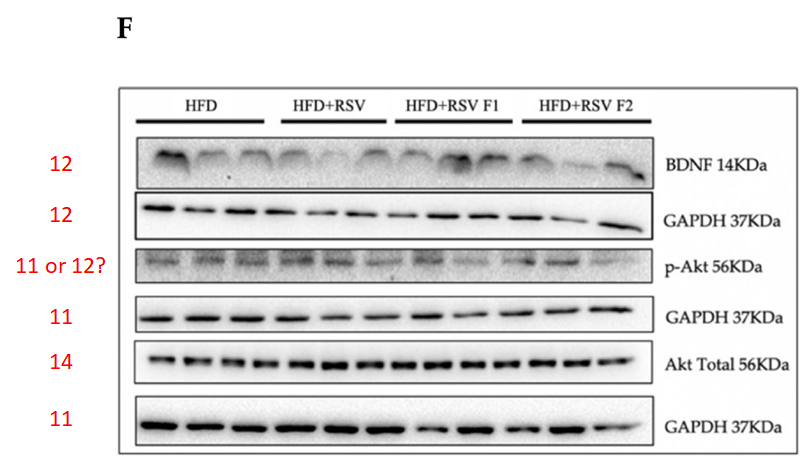
These professors, the intellectual elites of their nation, seem to be too [insert adjective of choice] to count. But hey, it pissed pee review, as all the other trash from that team.
Will department’s representative and Board of Director member Pallas now investigate her own papers with Camins? The institute’s director Alberch told me and the editor Gonos:
“Professor Merce Pallas is not the head of the Pharmacology Department. In our University, we have an ethical Committee with external scientists without conflict of interest that will send a full report after the examination of all the data“.
How good to know. Let’s hope these “external scientists without conflict of interest” won’t also be without any knowledge of biology, like those “neuroscientists” they will be investigating.
PS: Clare Francis wanted me to remind you of other excellent biomedical researchers in Barcelona:
- Manel Esteller, director of the Josep Carreras Leukaemia Research Institute and professor of genetics at the University of Barcelona, became one of Spain’s most powerful scientists despite or even because of the fraud affair of his PhD student Sonia Melo (read here). Esteller has 25 papers on PubPeer, many without Melo.
- Maria Pia Cosma, professor at Center for Genomic Regulation (CRG) in Barcelona whose 11 papers on PubPeer were spared any proper investigations because her former mentor and coauthor Kim Nasmyth is just too important. Cosma is showered with awards and cash (read here).
- Pura Muñoz-Cánoves, professor at Universitat Pompeu Fabra in Barcelona and another award-winning star of Spanish biomedicine, despite or because of her 12 papers rotting on PubPeer for many years, not even corrected (read here). Munoz-Canoves remains a loyal associate of her disgraced German colleague K Lenhard Rudolph (read here).
- Andrea Cerutti, ICREA professor at Institut Hospital del Mar d’Investigacions Mèdiques (IMIM) in Barcelona. Despite around 20 papers on PubPeer, not one retraction due to top connections in USA and Spain (read here).
- Antonio Garcia de Herreros, also group leader at IMIM, with over 30 papers on PubPeer and 4 retractions for fraud.
- Mireia Duñach, professor of biochemistry at Universitat Autonoma de Barcelona and collaborator of de Herreros. 17 papers on PubPeer, evidence also 5 years old, at least some were corrected.
- Antonio Celada, professor of immunology at University of Barcelona. 23 papers on PubPeer, rotting there for 5 years already.
- Sandra Peiró, group leader at Vall d´Hebron Institute of Oncology in Barcelona and another collaborator of de Herreros, with one joint retraction. 9 papers on PubPeer.
Actually…. I think I just made a list for the perfect team of external investigators to solve the local Camins and Pallas affair….

Donate!
If you are interested to support my work, you can leave here a small tip of $5. Or several of small tips, just increase the amount as you like (2x=€10; 5x=€25). Your generous patronage of my journalism will be most appreciated!
€5.00


Nice write up. Thanks for all you do
LikeLike
Amazing.
Camins was my supervisor’s boss back when I was a master’s student in Barcelona (10 years ago).
I’m honestly… Unsurprised.
LikeLike
I wonder what your supervisor learned there….
LikeLiked by 1 person
For now I will only say that the results of my masters and undergrad theses were published on a paper without ever mentioning my name… Not even in the acknowledgements.
LikeLike
Right, I see what skills your supervisor learned…
LikeLike
Maybe the CA1/CA3 duplication in Journal of Alzheimer’s disease (2016) should be removed from the cases. CA1 and CA3 are in anatomical continuity.
LikeLike
Thank you for that clarification. I will update the comment on PubPeer. This is one of the challenges a non-scientist faces when attempting this work.
LikeLike
Yes, there’s at least part of CA3 in that picture (not sure why it’s upside-down but meh)
LikeLike
Carme Caelles needs to honoured in her own right.https://webgrec.ub.edu/webpages/000003/cat/ccaelles.ub.edu.htmlhttps://pubpeer.com/search?q=caelles
This is such a contribution to diabetes.https://pubpeer.com/publications/63E135510819FF021E862EA5469043
Just like her compatriot Manuel Benito in Madrid, who learned his craft at Ronald Kahn’s knee.https://www.ucm.es/directorio?id=2663https://pubpeer.com/search?q=manuel+benitohttps://pubpeer.com/search?q=benito+kahn
Another contribution to diabetes, I mean prolonging the time diabetes will be a health problem.https://pubpeer.com/publications/6FDF6B730030E5398CF394523FD5EE
LikeLike
https://www.ucm.es/directorio?id=2663
Pubpeer pages for Manuel Benito are fuddled.
Should be:-
https://pubpeer.com/search?q=manuel+benito
https://pubpeer.com/search?q=benito+kahn
LikeLike
Honorable mention for Angel Nebreda. All adds to the quality.
https://www.irbbarcelona.org/en/research/angel-r-nebreda
https://pubpeer.com/publications/6FF461864727D915AEF3AEAD4F7AF4
https://pubpeer.com/publications/0F6F8651B20FBBD42C8E4C02AC31F6
https://pubpeer.com/publications/9C85B0DE3B5FC75E325B9825539DD1
https://pubpeer.com/publications/5159039ACDA17CC3308A00232CB1BC
https://pubpeer.com/publications/233DED73BCB836DCF184425557FF4C
https://pubpeer.com/publications/D4B361DD321D8B1C1D4E5D0CF7953D
LikeLike
Are the “this is Barcelona, Spain” comments needed? Great article, but that paragraph is really aggravating and generalizing to a whole group of people who are just as valid and hard-working as any person coming from whatever arbitrary piece of land you happen to come from.
LikeLike
Any wrongly accused on the list?
LikeLike
“Great article, but that paragraph is really aggravating and generalizing to a whole group of people who are just as valid and hard-working as any person coming from whatever arbitrary piece of land you happen to come from.”
The people in the list below are not the whole population of Barcelona, but part of the “scientist” population of Barcelona. They are working in Barcelona, not elsewhere. It is not “generalizing”, but “particularizing”.
I don’t understand what you mean by “valid”.
They may very well be hard-working when it comes to digging their gardens, but I beg to differ that the people on the list are: “whole group of people who are just as valid and hard-working as any person coming from whatever arbitrary piece of land you happen to come from.”, when it comes to their scientific output.
In the age of Woke you need to know about the ecosystem. They are an important part of the ecosystem.
Alternatively you may like to think of them as setting the community standards.
Manel Esteller, director of the Josep Carreras Leukaemia Research Institute and professor of genetics at the University of Barcelona, became one of Spain’s most powerful scientists despite or even because of the fraud affair of his PhD student Sonia Melo (read here). Esteller has 25 papers on PubPeer, many without Melo.
Maria Pia Cosma, professor at Center for Genomic Regulation (CRG) in Barcelona whose 11 papers on PubPeer were spared any proper investigations because her former mentor and coauthor Kim Nasmyth is just too important. Cosma is showered with awards and cash (read here).
Pura Muñoz-Cánoves, professor at Universitat Pompeu Fabra in Barcelona and another award-winning star of Spanish biomedicine, despite or because of her 12 papers rotting on PubPeer for many years, not even corrected (read here). Munoz-Canoves remains a loyal associate of her disgraced German colleague K Lenhard Rudolph (read here).
Andrea Cerutti, ICREA professor at Institut Hospital del Mar d’Investigacions Mèdiques (IMIM) in Barcelona. Despite around 20 papers on PubPeer, not one retraction due to top connections in USA and Spain (read here).
Antonio Garcia de Herreros, also group leader at IMIM, with over 30 papers on PubPeer and 4 retractions for fraud.
Mireia Duñach, professor of biochemistry at Universitat Autonoma de Barcelona and collaborator of de Herreros. 17 papers on PubPeer, evidence also 5 years old, at least some were corrected.
Antonio Celada, professor of immunology at University of Barcelona. 23 papers on PubPeer, rotting there for 5 years already.
Sandra Peiró, group leader at Vall d´Hebron Institute of Oncology in Barcelona and another collaborator of de Herreros, with one joint retraction. 9 papers on PubPeer.
LikeLike
I do not mean to defend any of the specific people called out here, I merely wished to comment on the disparaging nature of that specific part. Having said that, I also do not intend to discuss this any further, since I believe I would be changing the topic of discussion and my main concern was to give my honest opinion on the text, take it or leave it of course.
The rest of the article, as I stated, is great and I found it quite interesting.
LikeLike
Not at all, I even happen to have heard about Dr Celada’s exploits while I was in Uni, i just wanted to point out that specific part of the article was a bit badly worded in my opinion. I have no issue with the rest!
LikeLike
What did you hear about Dr Celada’s exploits when you were in Uni?
“that specific part of the article was a bit badly worded”
It is a list, not prose. What do you expect?
LikeLike
I heard about classmates who went to his lab to do their Masters Thesis and were asked to “embellish” unfavorable results. Other than that, a close friend of mine was going to do his PhD research there and when he finally decided against it he sent him a strongly worded e-mail that was a good laugh for everyone he showed it to.
LikeLike
No big deal, you can publish a nice first-author artistic papers on Spain and years later become a PI on Yale 😉
Shame on all these frustrated scientists!
https://pubpeer.com/publications/A604DA3D707A7BEDB9A9B462A30B35#2
LikeLike
Sadly unsurprisingly, the journal Mechanisms of Ageing and Development allowed the authors to publish a correction. Somewhat surprisingly, the authors claimed the microscope created the clones. The manufacturer (Olympus, I think) was not quoted in the correction.
LikeLike
https://doi.org/10.1016/j.mad.2021.111615
“The authors regret that there are some (sic) errors in the original Figures 2, 3 and 5. A reader brought to our attention that there was a manipulation in the figures of the GFAP and IBA1 inmunohistochemistry in the control group and mice treated with a high fat diet in the hippocampus. After consulting with experts, the authors confirm, that these accidental duplications in the photographs of cell antibodies are due to problems with the camera.* Hence, the authors declare that the errors in the photographs are not intentional. Indeed, the results of the study have been maintained at all times, showing that high fat diet causes an activation of the glial cells that is associated with neuroinflammation in the hippocampus. Therefore, the results of our study are experimentally reproducible, as we and other laboratories have reported in later publications and do not alter the conclusions of the manuscript at any time. The corrected version of Figures 2, 3 and 5 has been provided and replaced.
The authors would like to apologise for any inconvenience caused.”
I think the cLSM manufacturer Olympus should sue these fraudsters, the editor and Elsevier for slander.
LikeLike
Attempts to consult Antonio Camins group entry in CIBERNED returns a 404 error but an old version
– dated 2022 Mar,20- is cached in Google.
CIBERNED is Spanish acronym for Biomedical Network Research Center on Neurodegenerative Diseases
CIBERs were a project for science and research born in 2006 under the auspices of socialist government
of former President Rodríguez Zapatero
and with a commitment to transparency in research results.
In 2012, the merger of seven of these CIBERs into a single Consortium had already been agreed
and in 2021 the director of the Carlos III Health Institute agreed incorporation of CIBERNED into Consortium.
Now those CIBERs work as areas of Consortium.
As entries of other research groups in CIBERNED can still be consulted,
my views on this is that Spanish government does not want to become involved
in another scandal like… affaires of His Excellency Rear Admiral Hoaxer,
researcher Lady Cheater and Honorable Doktor FraudStein
Everybody knows here, I guess
LikeLike
Eva Carro had ‘problems’ with their camera too. First-author is a Professor in Yale now.
https://pubpeer.com/publications/A604DA3D707A7BEDB9A9B462A30B35#5
LikeLike
There’s at least another possible duplication… The three green dots above ”CP” appears at least three times in the image
LikeLike